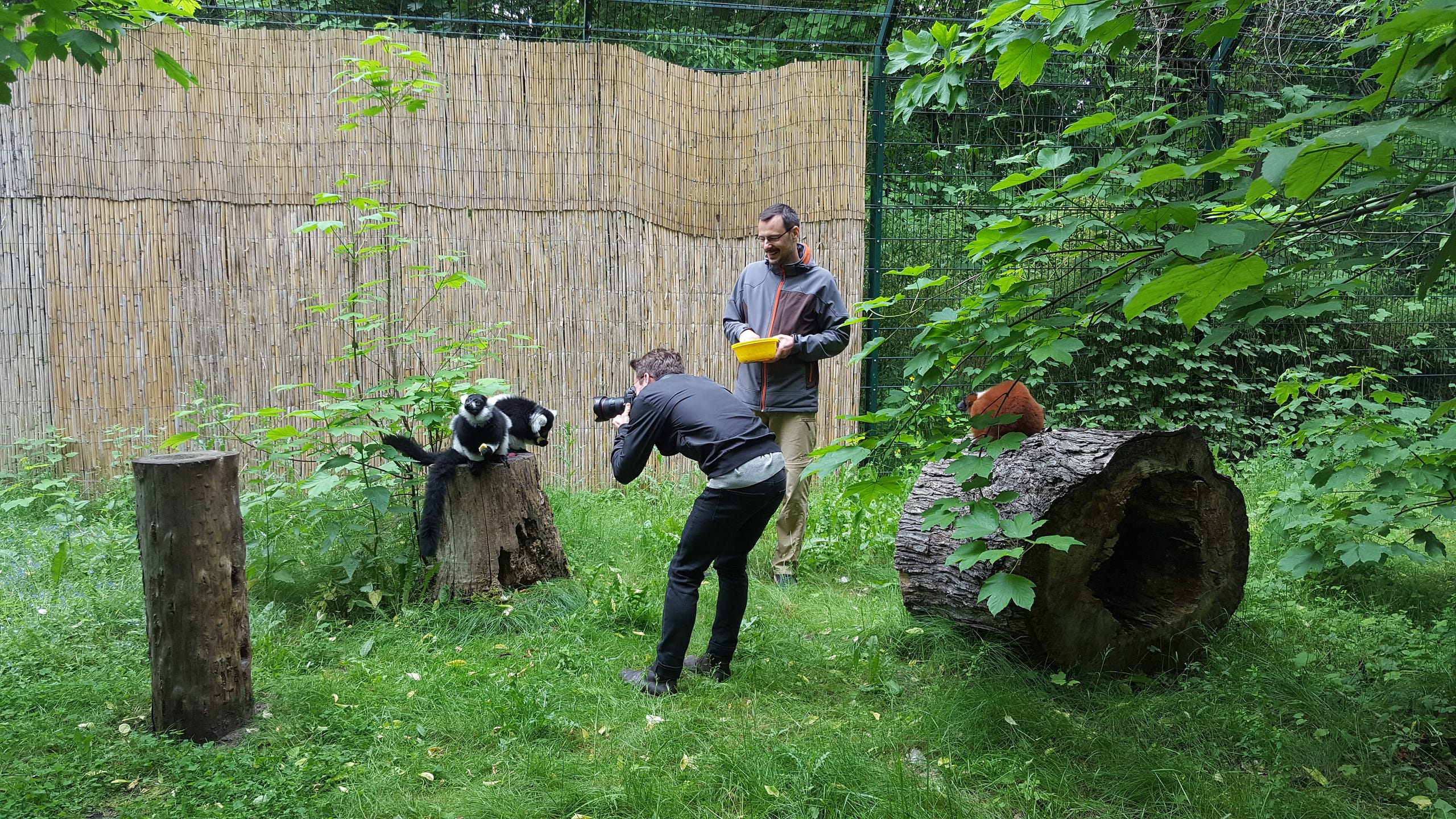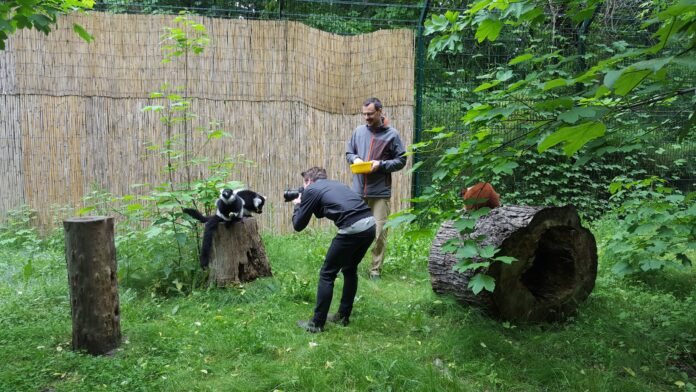Social Impact Heroes: How National Geographic Photographer Michael George is using his art to promote animal conservation, rescue programs and support climate change legislation

…Do not support shady wildlife tourism. When traveling (especially abroad), thoroughly research any activities you plan that bring you into contact with animals or wildlife. National Geographic’s most recent cover story outlines how deeply many of these animals are mistreated. Support your local zoo and aquariums and look into their conservation, research, and rescue programs. If you can, donate specifically to those parts of the organization. Support climate change legislation. Climate change is not just a threat to humans, but also all species natural habitats.
As a part of our series about social impact heroes, I had the pleasure to interview Michael George. Michael George is a photographer and writer based out of Brooklyn. His human interest and travel stories have been published by National Geographic, The New York Times, WIRED, and dozens of other publications. He has been a guest lecturer at Yale University and taught workshops in locations that vary from the coast of California to onboard an Amtrak train.
Thank you so much for doing this with us! Can you tell us a story about what brought you to this specific career path?
I grew up in south Florida and was lucky to be surrounded by a beautiful array of wildlife, along with teachers who cared about that wildlife. When I was in high school, a National Geographic photographer named Mattias Klum gave a presentation on his work with endangered species. At the time, I was debating either going to college for photography or political science, and this experience along with my existing love of nature helped solidify my decision. Growing up, I had fond memories of visiting places like SeaWorld and learning about animal conservation and the important work they do that focuses on the dangers facing our planet’s habitats. Photography felt like a natural path to become a storyteller and ignite change in the world.
Can you share the most interesting story that happened to you since you began this career?
Recently I had a very unexpected viral moment. Last year I released a children’s book called ‘Life at the Zoo’ that teaches kids the role that zoos and aquariums play in animal conservation, rescue, research, and breeding. To celebrate the second printing of the book, I posted a behind-the-scenes video of a rescued baby manatee at SeaWorld. The video was posted on social media and almost immediately went viral. It has now been posted on countless pages, racked up somewhere near 30 million views and was even featured on Good Morning America. Almost daily, I have friends messaging me with a new location they’ve spotted the video. Who knew people loved manatees as much as I do!?

Can you share a story about the funniest mistake you made when you were first starting? Can you tell us what lesson you learned from that?
One of my first assignments was to travel to a farm in upstate New York and photograph hens for a story on pasture-raised eggs. I had this elaborate idea of photographing a chicken on a royal red backdrop and mimicking the style of a Rembrandt painting. What I failed to research is how scared chickens are of foreign objects. If it looks weird or is vaguely threatening (like a backdrop blowing in the wind!) they won’t come anywhere near it. Fast forward to our shooting day when I had to wait patiently for an hour, slowly making a trail of feed to coax a brave chicken onto the backdrop. Since that day, I’ve always run through my plan with the subject to make sure there are no unexpected barriers standing in the way of the great image in my mind.

Ok super. Let’s now jump to the core focus of our interview. Can you describe to our readers how you are using your platform to make a significant social impact?
The simple answer is telling good stories. I was worried when Instagram first launched that it was strictly a visual medium. So much of my work relies on the text that goes along with the images. I quickly and happily learned that a solid story in the caption will further engage the audience and keep them coming back. For years now, I have told stories that range from a rescued dog-sledding team in Canada, to climate change and melting glaciers in Patagonia, to my most recent project focused on the positive aspects of zoos and aquariums. My social media almost always includes a call to action with specific steps that the audience can take to support social good. Whether that’s donating, volunteering, or simply spreading the word.
Wow! Can you tell us a story about a particular individual who was impacted by this cause?
My stories are often less about individuals and more about specific places, organizations, and cultures. I know many of the zoos and aquariums included in my book have received positive attention after publication.
For my viral video specifically, those baby manatees were brought to SeaWorld after they were left without parents and unable to survive without proper care. The animal care specialist you see bottle feeding the baby manatee was one of the many handlers giving them around the clock care. I loved knowing that such an adorable and heart warming video could also help spread awareness on the important animal care than can occur within zoos and aquariums.

Was there a tipping point the made you decide to focus on this particular area? Can you share a story about that?
When I was working on a travel story in 2015 I visited the Riverbanks Zoo in South Carolina and went behind-the-scenes. I was immensely surprised at how much goes on that the public doesn’t know about. People have all sorts of misconceptions about zoos: Are they good for the animals? What do they do for wild species? Are the animals well taken care of? Where do the animals come from? I realized there is such a lack of information, and a deluge of misinformation, so I decided to write and photograph a book on the topic to let my readers know how important these organizations are to conservation and education.

Are there three things the community/society/politicians can do help you address the root of the problem you are trying to solve?
- Support your local zoo and aquariums and look into their conservation, research, and rescue programs. If you can, donate specifically to those parts of the organization.
- Support climate change legislation. Climate change is not just a threat to humans, but also all species natural habitats.
- Do not support shady wildlife tourism. When traveling (especially abroad), thoroughly research any activities you plan that bring you into contact with animals or wildlife. National Geographic’s most recent cover story outlines how deeply many of these animals are mistreated.

What specific strategies have you been using to promote and advance this cause? Can you recommend any good tips for people who want to follow your lead and use their social platform for a social good?
I published a children’s book, Life at the Zoo, which brings to life my love for animals and explains to kids (and adults!) the benefits of AZA-accredited zoos and aquariums. During my promotion of the book, I did countless AMAs, presentations, and posted additional stories and behind-the-scenes moments on my Instagram. I really hope this book can help to spark conversations centered on demystifying these institutions. One of the major stories in the books focuses on SeaWorld’s rescue program, which has saved over 34,000 animals. SeaWorld is featured on the cover, and their recently rescued baby walrus was one of my favorite interactions I had during the making of the book.
My biggest tip is to create a call to action. People often use social media to wax political and shout their concern, but they don’t often give their audience something to do. Every time you bring up a social issue, end it with a specific list of concrete things your audience can do. This makes people feel less helpless, and actively gets them involved with your cause.
What are your “5 things I wish someone told me when I first started” and why? Please share a story or example for each.
1 — First impressions are first impressions. So many young artists want to meet with the big names right out the gate. They graduate college and think: “It’s time to make it!” But I am here to tell you, honey, that making it takes time. If your portfolio looks amateur, then your first impression will be hard to erase. Take time to build your portfolio until you’ve matured and are confident enough to seriously impress.
2 — Don’t be afraid of crappy work. When I first graduated, I was doing a lot of terrible things. Doctor’s headshots, endless weddings, retouching lingerie for some hideous e-store. You name it, I did it. But the beauty of the struggle is it kept me freelance and gave me the time I needed to work on my portfolio and develop into the artist I am today. You’re not going to go from school to National Geographic. There needs to be (a lot) of stepping stones in between.
3 — Be real. Just because you’re trying to get people to jump on board with something, doesn’t mean you need to devolve into terrible adspeak or edit yourself to death. Speak from the heart and people are more likely to listen.
4 — Be funny! The Earth is dying and we have a Cheetoh for President. These things are serious, but it’s okay to laugh from time to time.
5 — Find your idols and ask them questions. The best people to give advice are the people who are doing what you want to be doing. The Internet is a magical portal that connects us to almost anyone. You’d be surprised at who will respond to your email. Be bold!

You are a person of enormous influence. If you could inspire a movement that would bring the most amount of good to the most amount of people, what would that be? You never know what your idea can trigger. 🙂
Act on climate change. Not now, not later. Now. Politicians are slowly waking up to the true emergency, but the alarm bells need to ring louder. All social movements are important, but none if it matters if we don’t have a planet to live on.
Can you please give us your favorite “Life Lesson Quote”? Can you share how that was relevant to you in your life?
“Still, accomplishment is unreliable. “Succeeding,” whatever that might mean to you, is hard, and the need to do so constantly renews itself (success is like a mountain that keeps growing ahead of you as you hike it), and there’s the very real danger that “succeeding” will take up your whole life, while the big questions go untended.” — George Saunders
When I was at the start of my career, I realized I was too focused on working to actually live. To be a good artist, you must live in the world, react to it, understand it, and feel it. From that place is where good art grows.
Is there a person in the world, or in the US whom you would love to have a private breakfast or lunch with, and why? He or she might just see this, especially if we tag them. 🙂
I will never stop dreaming of meeting Michelle Obama. I can think of few other people who have done more good in the world. She is endlessly inspiring to me for staying endlessly focused on her message, despite a horrific pushback from her detractors.
How can our readers follow you on social media?
Links to my channels and website can be found below:


